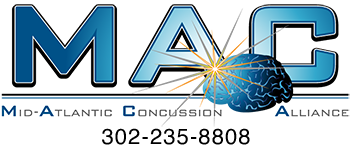BrainScope® One Background
Recovery, for many patients, is an extended duration that can last weeks, months or even years after their injury. Issues can include ongoing cognitive deficits, memory and word find issues, difficulty multitasking, light sensitivity and sound sensitivity. There may be concern for structural brain injury that could be permanent.
There is currently no commercially available imaging study (CT Scan or MRI) that can pick up extensive damage to the brain from a concussion (that does not involve a bleed or a fracture of the skull). In order to obtain objective evidence to confirm potential permanent structural injury, a military-grade, FDA-approved EEG system called BrainScope® One can be performed along with functional studies like VOMS and computerized neurocognitive tests.
Hidden Damage
Extensive damage to the brain like chronic traumatic encephalopathy (CTE) cannot be found by the latest imaging of the brain including CT scans and MRIs. This is the reason why CTE remained hidden and evasive for decades in spite of high-tech computerized radiography and magnetic imaging available since the 1970s.
The BrainScope® One EEG technology was developed and tested in the military for over a decade before it became FDA-cleared for the civilian population, and is now FDA-approved for ages 18-85. It was first approved for quickly screening a soldier on the battlefield with a possible life-threatening brain bleed in case immediate neurosurgical intervention was necessary. Later, BrainScope® was approved to diagnose concussions. It was subsequently approved as a tool to indicate clearance of a concussion by using its complex algorithms to show that there was complete recovery and no evidence of permanent structural brain injury on the quantitative EEG tracings.
At MAC Alliance locations, we use the BrainScope EEG in this capacity for our patients whose injury was over six months prior and their post-concussive deficits are not resolving. The purpose of BrainScope EEG here is to evaluate any remaining structural brain injury to explain the permanency of post-concussive syndrome deficits. In essence, the presence of a positive “Structural Injury Classifier” on a BrainScope EEG done months or years after the acceleration/deceleration injury from a concussion is detecting axonal shearing. Axonal shearing or severing of nerve fibers that have occurred at the time of the original traumatic brain injury (TBI) leave permanent abnormalities in the brain when compared to a normal EEG of a person the same age.









